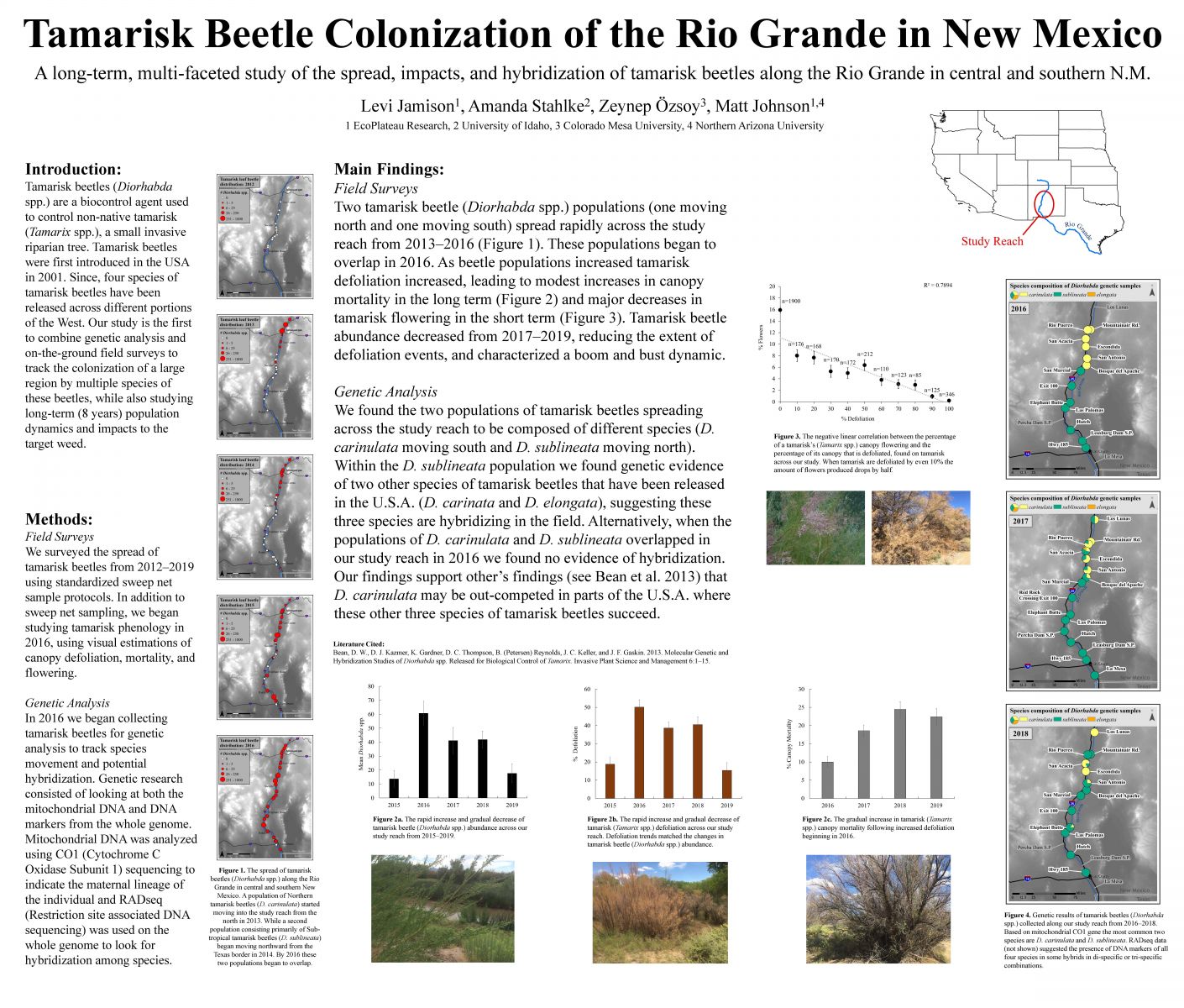Tamarisk Beetle Colonization of The Rio Grande in New Mexico: A Long-Term, Multi-Faceted Study Using Genetic Analysis and Field Surveys
Levi Jamison1*, Zeynep Ozsoy-Bean2, Amanda Sthalke3, Matthew Johnson4
1Moab, UT, USA; ljamisonresearch@gmail.com
2Colorado Mesa University, Grand Junction, CO, USA; aozsoy@coloradomesa.edu
3University of Idaho, Moscow, ID, USA; amandastahlke@gmail.com
4EcoPlateau Research, Flagstaff, AZ, USA; matthew.johnson@nau.edu
This poster summarizes the results of a long-term study on the colonization of the Rio Grande by tamarisk beetles (Diorhabda spp.), a group of biocontrol agents introduced to manage invasive/non-native tamarisk (Tamarix spp.). Using a combination of genetic analysis and field surveying, we documented the rapid spread of tamarisk beetles and their impacts to tamarisk along the Rio Grande between Albuquerque, NM, and El Paso, NM. During the study, we monitored two different populations of tamarisk beetles as they spread across the watershed from opposite directions, eventually overlapping. We studied this unique field occurrence using two kinds of genetic analyses to understand the degree of hybridization between the species within the field and the outcomes of this overlap. In addition, we used field survey data to look at changes in tamarisk beetle demographics and changes in tamarisk canopy health over a five-year period. The results of this multi-year study are useful for understanding the long-term composition and behavior of tamarisk beetles and will help guide the management of tamarisk invaded riverways in the West.

